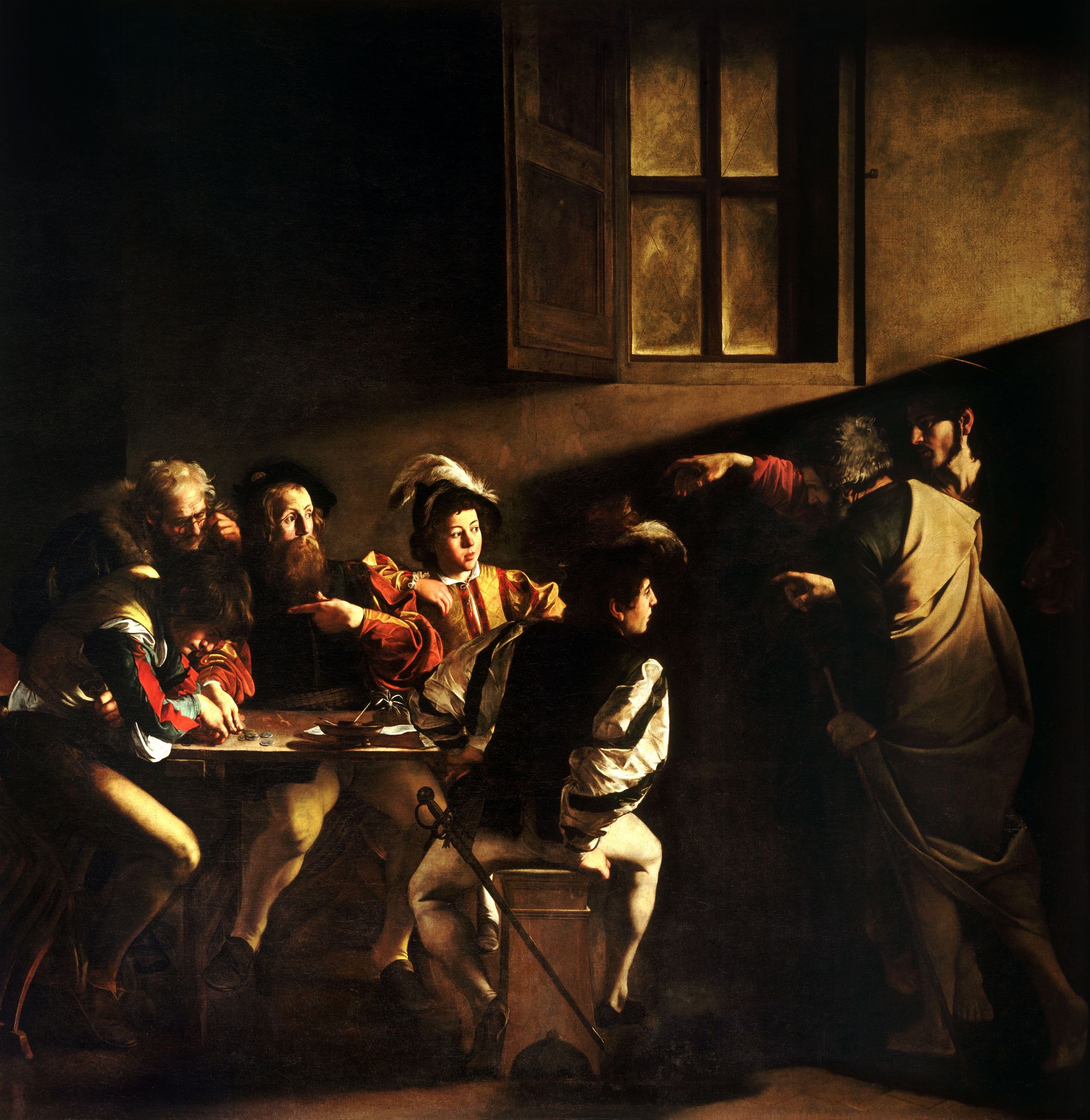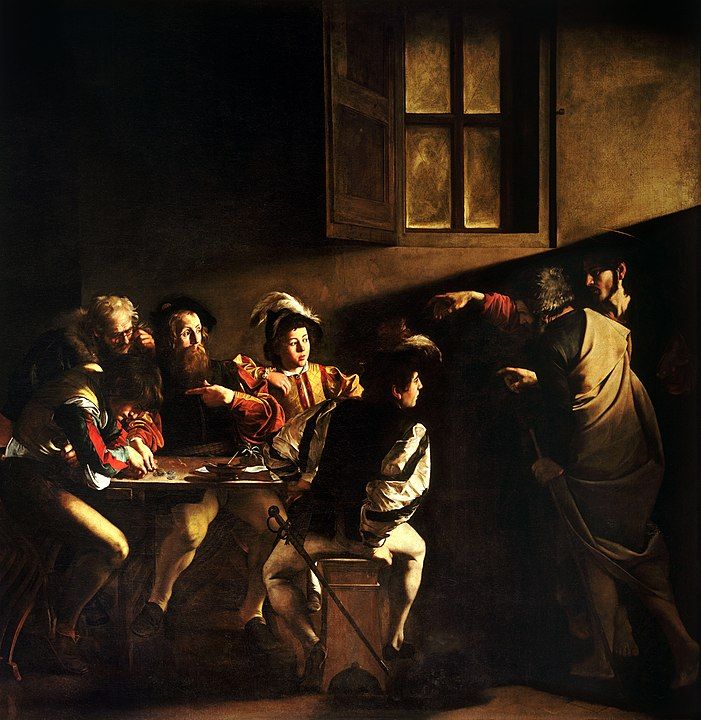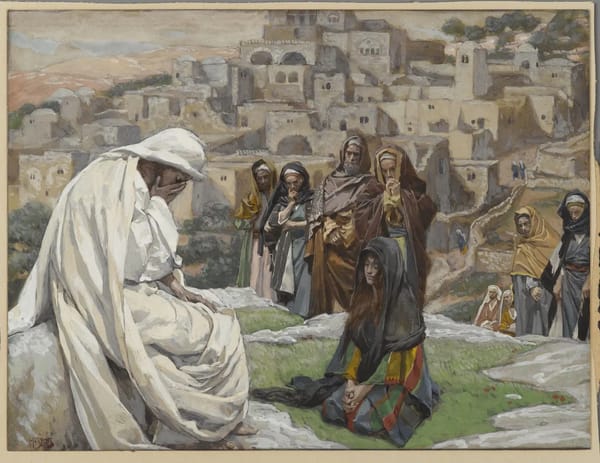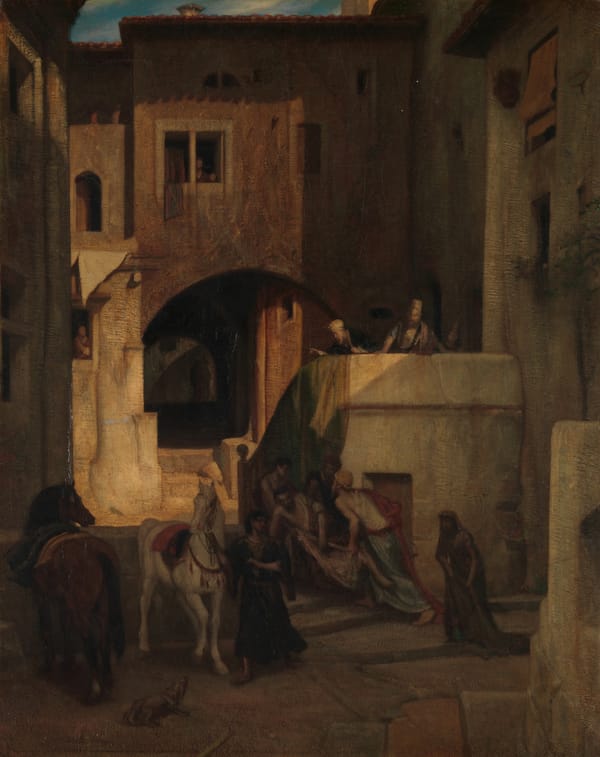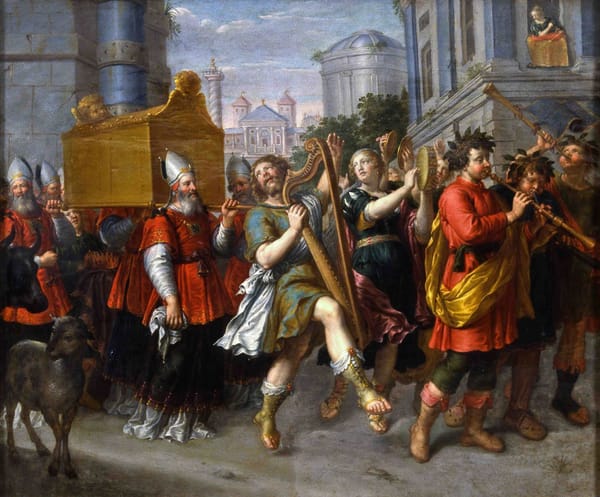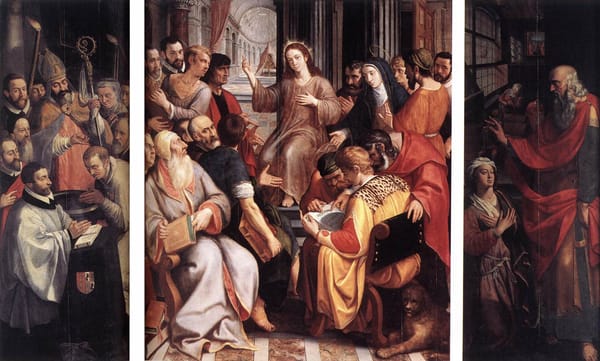The Calling of Saint Matthew is a masterpiece by Michelangelo Merisi da Caravaggio, depicting the moment at which Jesus Christ inspires Matthew to follow him. It was completed in 1599–1600 for the Contarelli Chapel in the church of the French congregation, San Luigi dei Francesi in Rome, where it remains. It hangs alongside two other paintings of Matthew by Caravaggio, The Martyrdom of Saint Matthew (painted around the same time as the Calling) and The Inspiration of Saint Matthew (1602).
In this painting, the gloom and the canvassed window appears to situate the table indoors. Christ brings the true light to the dark space of the sitting tax-collectors. This painting records the collision of two worlds — the ineluctable power of the immortal faith, and the mundane, foppish, world of Levi. Jesus spears him with a beam of light, with an apparent effortless hand gesture he exerts an inescapable sublime gravity, with no need for wrenching worldly muscularity. Jesus' bare feet are classical simplicity in contrast with the dandified accountants; being barefoot may also symbolize holiness, as if one is on holy ground. Similarly to his treatment of Paul in the Conversion on the Way to Damascus, Caravaggio chronicles the moment when a daily routine is interrupted by the miraculous. Around the man to become Matthew are either the unperceptive or unperturbed bystanders.
Caravaggio's audience would have seen the similarity between the gesture of Jesus as he points towards Matthew, and the gesture of God as he awakens Adam in Michelangelo's Sistine Chapel. Following the line of Christ's left arm, it seems that Matthew is being invited to follow him into the world at large. "This clear legibility, so different from many Mannerist paintings, ... accounted for the work's enormous popularity." The position of Christ's hand, however, reflects that of Adam's in the Sistine Chapel; the Church considered Christ to be the second Adam.
Free Downloads Below
Hi-Res
1200px
800px
